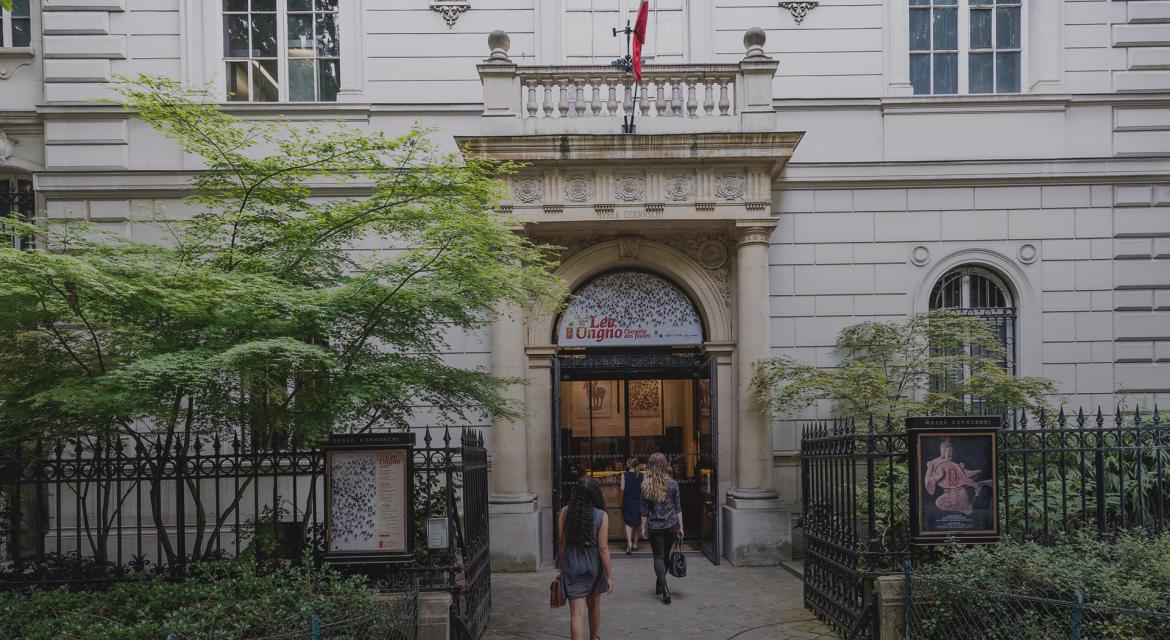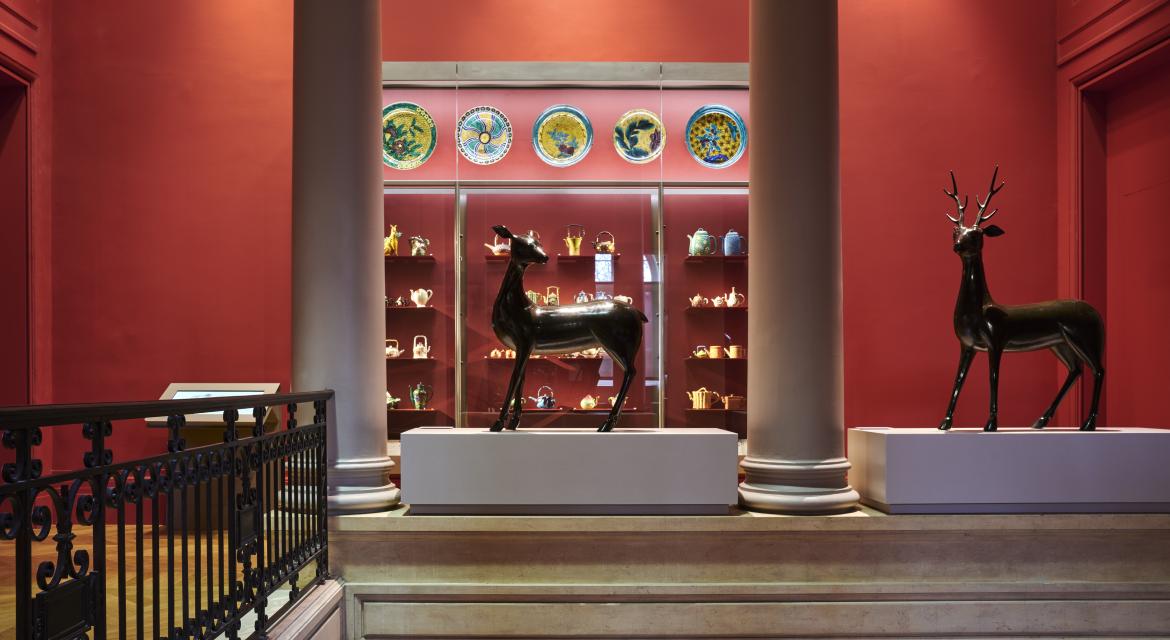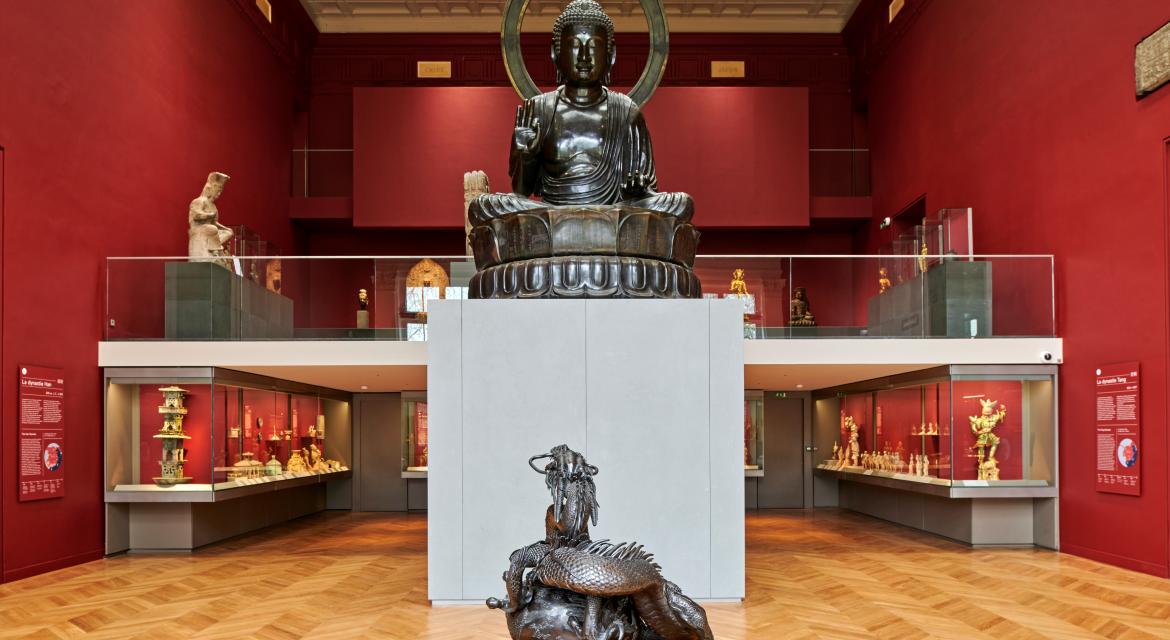The mansion
On his return from his tour of Asia, Henri Cernuschi had a mansion built, which would later house the eponymous museum.

© Pierre Antoine

© Pierre Antoine

© Pierre Antoine
A neoclassical-style mansion
Built by the Dutch-born architect, William Bouwens van der Boijen, the building is built in the neoclassical style that was popular in northern Italy circa 1840.
The exterior
The facade features mosaic medallions of Aristotle and Leonardo da Vinci, whom Cernuschi admired. On the main entrance doors are two plaques bearing the words Février and Septembre, the dates of the two revolutions of 1848 and 1870 that established the republic in France. Bearded atlantes support the wide cornice that runs around the building.
The interior
The interior is arranged around a vast, high-ceilinged hall looking onto the Parc Monceau and dominated by the great bronze Buddha acquired by Cernuschi in Japan in Meguro on the outskirts of Edo (Tokyo). Plaques set into the friezes at ceiling level mark the Chinese and Japanese legs of the journey that Cernuschi and Théodore Duret undertook in Asia, between 1871 and 1873. In 2001 and 2005, the building underwent a major renovation re-establishing its original layout and including the refurbishment of the first floor, where the permanent collections are now displayed, and an extension of the ground-floor exhibition spaces.
Indeed, the previous renovations dated from the end of the 50s, during which the museum needed a full overhaul, including a scenography adapted to new exhibition requirements and to modern standards of security and accessibility. In 2020, upon reflection about the exhibitions’ pedagogy, and following renovation which lasted nearly 9 months, the museum began a new phase of its history, characterised by a redesigned visit programme, a true invitation to travel in the precious box that is the mansion imagined by Henri Cernuschi in the 19th century.
An accessible museum
The museum is accessible for all mobility-impaired visitors. A lift accessed from the outside of the building leads to all of the museum’s rooms.